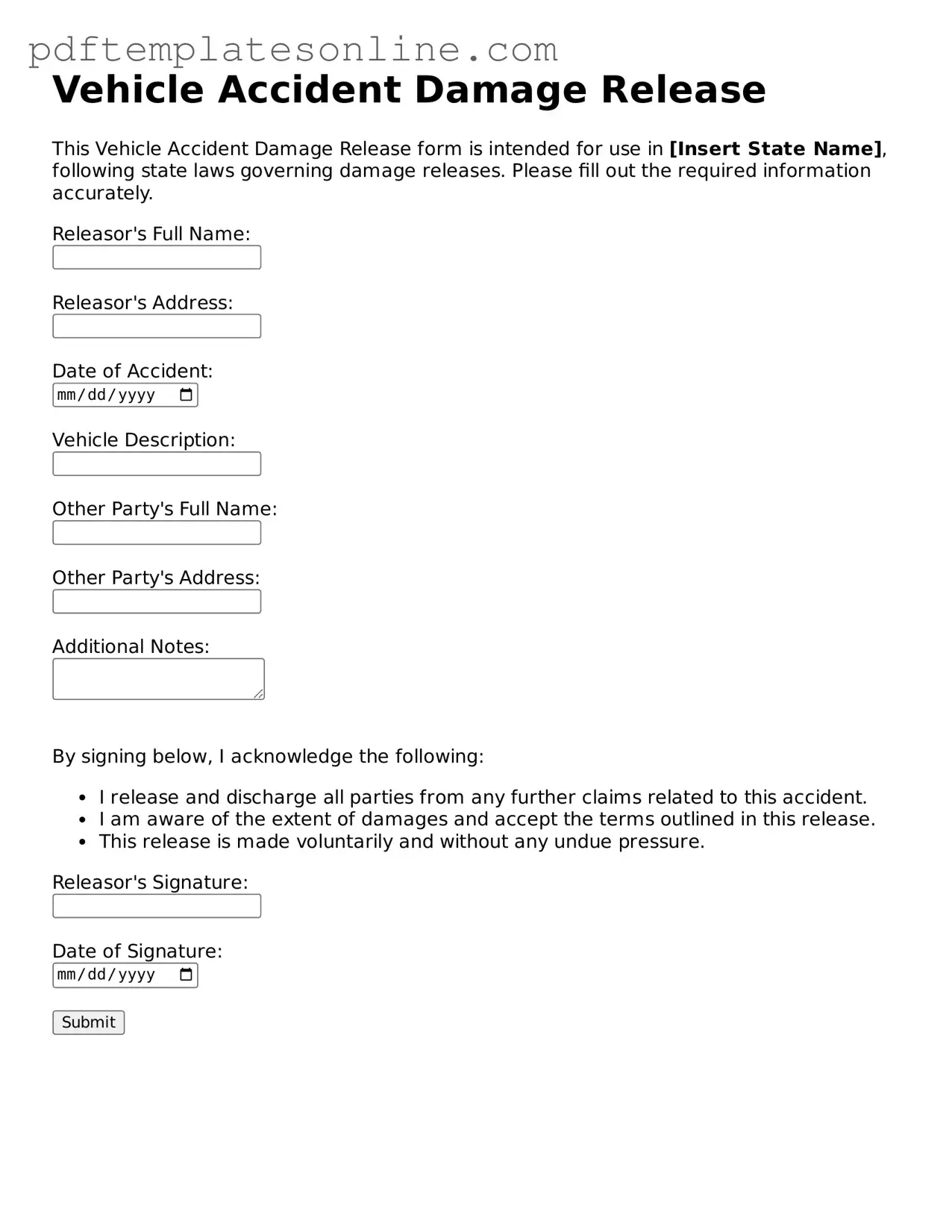Filling out a Vehicle Accident Damage Release form can be a straightforward process, but many individuals make common mistakes that can complicate their claims. One prevalent error is providing incomplete information. Failing to fill in all required fields can lead to delays or even rejection of the claim. Always ensure that every section is completed, including your contact details, vehicle information, and specifics about the accident.
Another mistake is not being specific about the damages. When describing the damage to the vehicle, vague language can create confusion. Instead of saying "the car is damaged," it’s better to detail what parts are affected, such as "the front bumper is dented and the rear left door has scratches." This clarity helps insurance companies assess the situation accurately.
Some people overlook the importance of documenting the accident scene. Failing to attach photographs or sketches of the accident can weaken a claim. Visual evidence can be crucial in illustrating how the accident occurred and the extent of the damage. Always include this documentation if possible.
Additionally, individuals often underestimate the value of obtaining witness statements. If there were bystanders or other drivers who witnessed the accident, their accounts can provide valuable context. Not collecting this information can leave a gap in the narrative of the incident.
Another common oversight is neglecting to read the form thoroughly before submission. Skimming through the document can lead to missed details or misunderstandings about what is being released. Taking the time to read and understand the form can prevent future complications.
People also frequently make the mistake of not keeping copies of submitted forms. Once the form is sent off, it’s easy to forget what was included. Keeping a copy for personal records can be helpful in case any disputes arise later on.
Moreover, some individuals may rush to sign the form without fully understanding the implications. Signing a release means you may be waiving your right to pursue further claims related to the accident. It’s crucial to understand what you are agreeing to before putting your signature on the document.
Lastly, failing to follow up after submission is a common mistake. After sending in the Vehicle Accident Damage Release form, it’s important to check in with the insurance company. This ensures that your claim is being processed and allows you to address any issues that may arise promptly.
